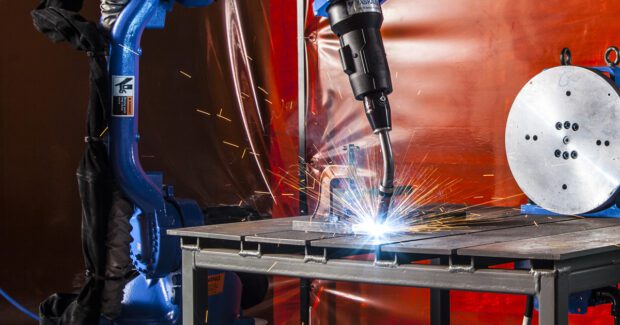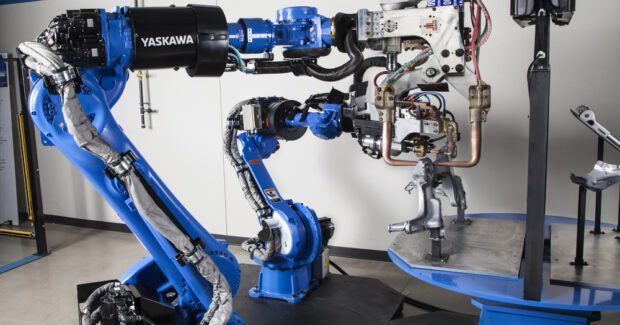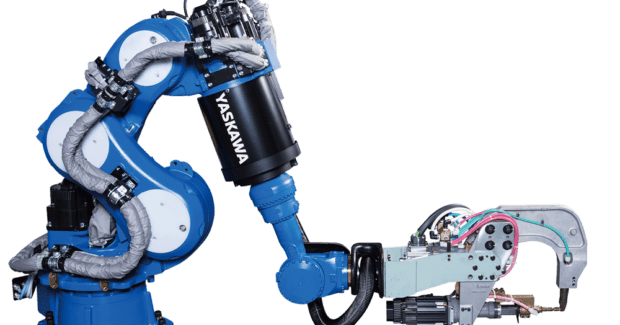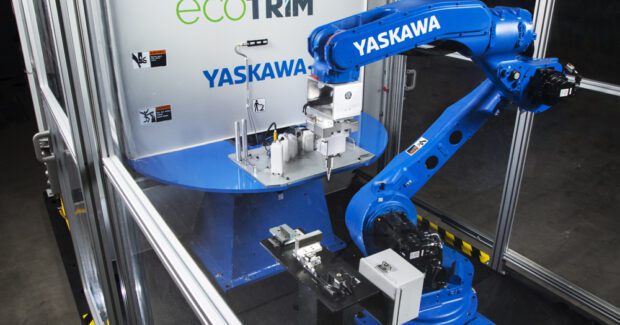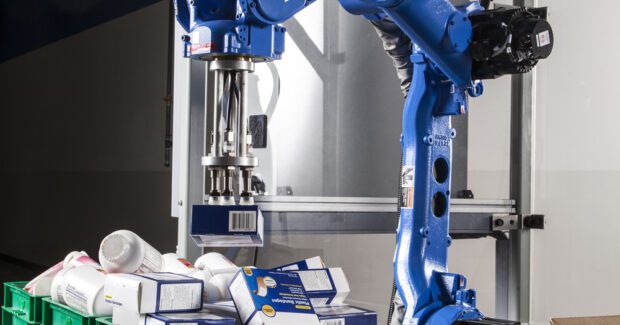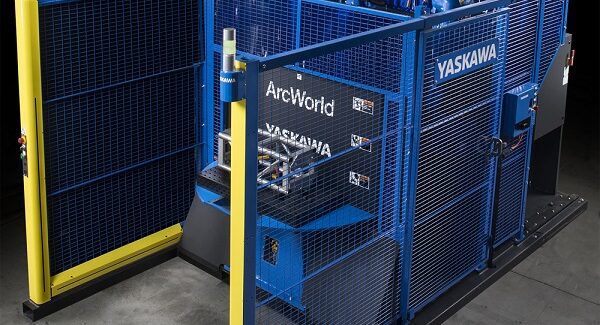How Robots Smooth Demand in a Fluctuating Market
Whether a shop is looking to add robots for the first time or an established manufacturer wants to implement extra technology for handling production pitfalls, the use of robotics to catapult momentum, boost production and accelerate ROI can provide a wealth of options for smoothing demand in a fluctuating market.
Posted: October 7, 2019
While U.S. manufacturing output has consistently hit all-time highs over the past two years, manufacturers are facing more challenges than ever: turbulent global economies, ever-changing government regulations, greater customer specifications, supply chain management and skilled worker shortages, to name a few.1 These outside influences, compounded by personal business struggles, are demanding a high level of attention from company leaders, prompting them to invest in advanced technologies, including robotic automation, to withstand market pressures, achieve tangible outcomes and maintain competitive edge.2 While the level of hard work and sheer tenacity it takes to keep business doors open should not be overlooked, the use of robots for industrial production is a key reason why manufacturers are able to be successful in both thriving and tight markets. But exactly how are these challenges met head-on every day via robots?
CONSISTENT WORKFORCE
During market slowdowns and times of uncertainty, fixed budgets can get even tighter. When this happens, some shops hire in at lower starting wages, but this can be challenging when workers are looking for more substantial paychecks. At the same time, qualified workers may be hard to find and new employees may require a certain degree of incentivizing and/or training to be productive team members. While investment to build a stronger workforce is always a good idea, it requires up-front costs and takes time to get employees up-to-speed. The human element is still important, and it is greatly needed in manufacturing. However, once robotic automation is successfully implemented, it can quickly and reliably fill the gap for manufacturers looking for more consistency and affordability in their workforce.
OPTIMIZED QUALITY
Engineered for precision – and easier to implement than ever – industrial robots, along with their peripheral technologies, can be programmed to perform a variety of tasks with impeccable accuracy for improved product quality:
- Arc Welding. Most arc welding power source manufacturers provide built-in options on the power supply to monitor weld parameters. While this includes a way to set limits for weld parameters based on actual results, other power supply processes offer advanced wave forms for certain materials for improved weld quality, reduced spatter and increased aesthetics.
- Spot Welding: Resistance welding technologies also have a considerable impact on product quality. Recently, the use of servo motors to actuate spot guns has become widespread. Motor control with robot software enables the electrodes to be synchronized with robot motion and provides precise control of electrode clamping force to improve weld quality. Specialty software and sensors can also help maintain consistency and weld quality on thick parts, offsets in parts, unique shapes and more.
- Other Applications: The need for consistency in manufacturing is great and robots provide users with the part control that is greatly needed to stay competitive today. For example, specially designed paint robots enable the ability to easily meet tight specifications and tolerances for factors such as coating thickness. Robotic systems for ultrasonic trimming – equipped with programmable trackballs and hybrid routers – offer total precision for certain material removal applications. The use of 2D and 3D cameras, along with specialized software for Vision Guided Robotics (VGR), has also mitigated randomness for object variances, providing the functionality needed to accurately pick and handle objects.
While these are only a few examples, finding the right balance is key to achieving productivity gains and subsequent long-term yield for any application. Because robots can increasingly meet or exceed requirements in nearly every regard, their full-time use on the factory floor is considered a “survival strategy” by some for maintaining the high level of quality and throughput required in production today.3
STEADY WORKFLOW
Fluctuating markets can especially effect job shops that greatly rely on overflow work from larger OEMs. When these larger companies experience downturns, many small and mid-size manufacturers have to find ways to compensate and stay profitable. One way that steady business is being realized is through the purchase of factory machinery and robotic automation. When a robot is ready to assist, business owners no longer need to turn down large bids because they cannot quickly find new skilled labor. Not only do these one-time investments pay off when production is down – shop owners do not have to pay hourly wages – but also, companies that take steps to add more robots, fixtures, CNC machines or pre-engineered robotic workcells often gain the consistency needed for the efficient manufacturing of high-quality parts on large production runs. Furthermore, a robust equipment arsenal that is more adept at handling medium- to large-sized parts is often an attractive selling point for outside companies looking for a contract manufacturer, helping to provide a steady flow of jobs.
MAXIMIZED ROI
Outside companies looking for help with overflow frequently shop on price. If a fabricator does not have the special fixturing or robotic equipment in place to complete a potential job, this can be a “deal breaker” because having to order fixtures or special tools obviously takes extra time and costs money. A robot is a piece of equipment that can deliver high performance for 20+ years, and it can be repurposed if needed during that time. Shops looking to bid on jobs competitively should not only weigh the pros and cons to each potential job, but they would also be wise to consider the potential financial gains to having certain equipment available on the factory floor, because this can help complete jobs in a timely fashion and maximize return on investment (ROI).
Whether a shop is looking to add robots for the first time or an established manufacturer wants to implement extra technology for handling production pitfalls, the use of robotics to catapult momentum, boost production and accelerate ROI can provide a wealth of options for smoothing demand in a fluctuating market.
References
- “Manufacturing Output Hits All-Time High, Signaling Industry’s Strength,” NAM, 2019.
- “Assembling a Strong Future: Industries Outlook 2018,” Deloitte, 2018.
- “How Robotics are Automating a Solution to the Labor Shortage & Growing Customer Demands,” Robotics Tomorrow, 2019.





